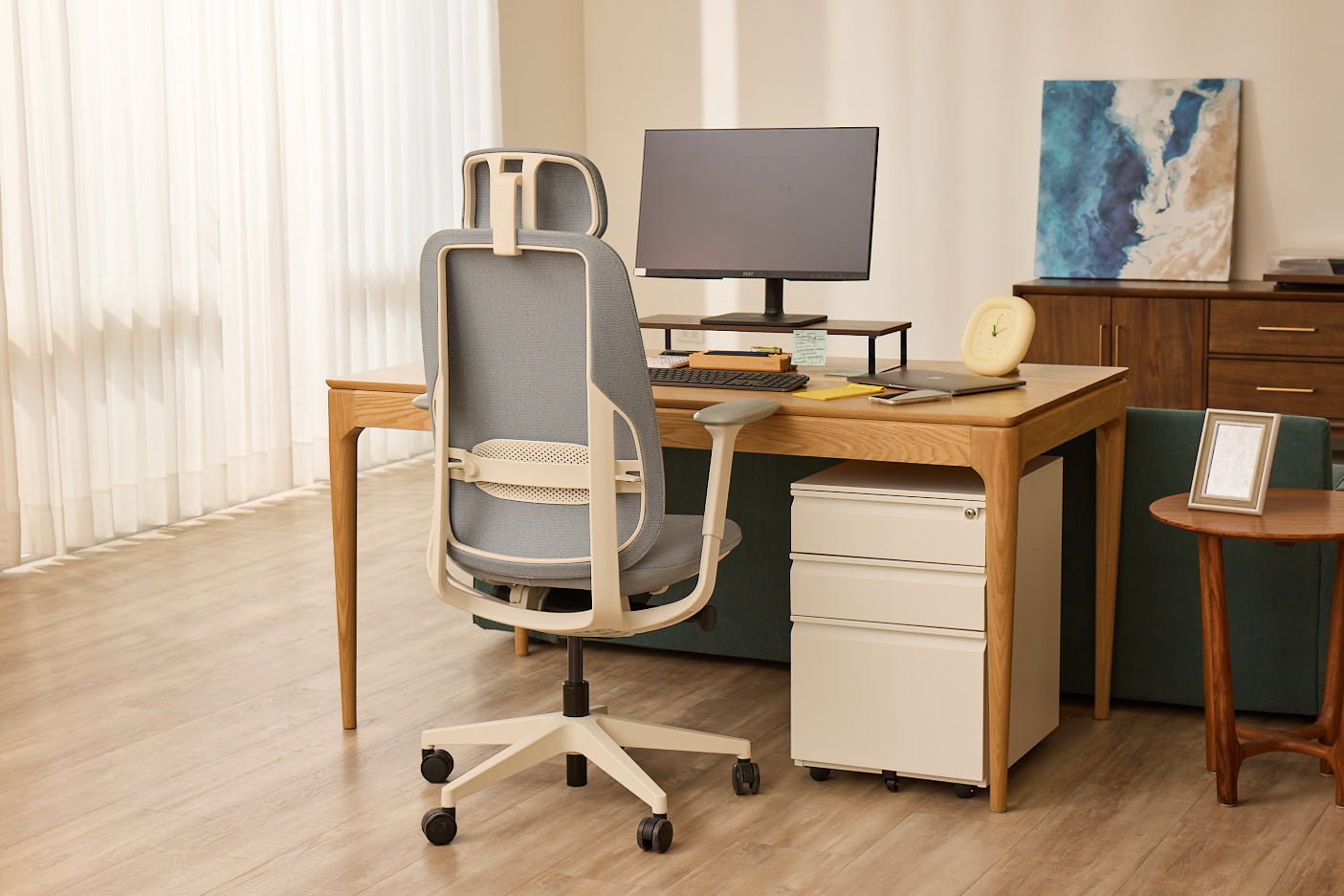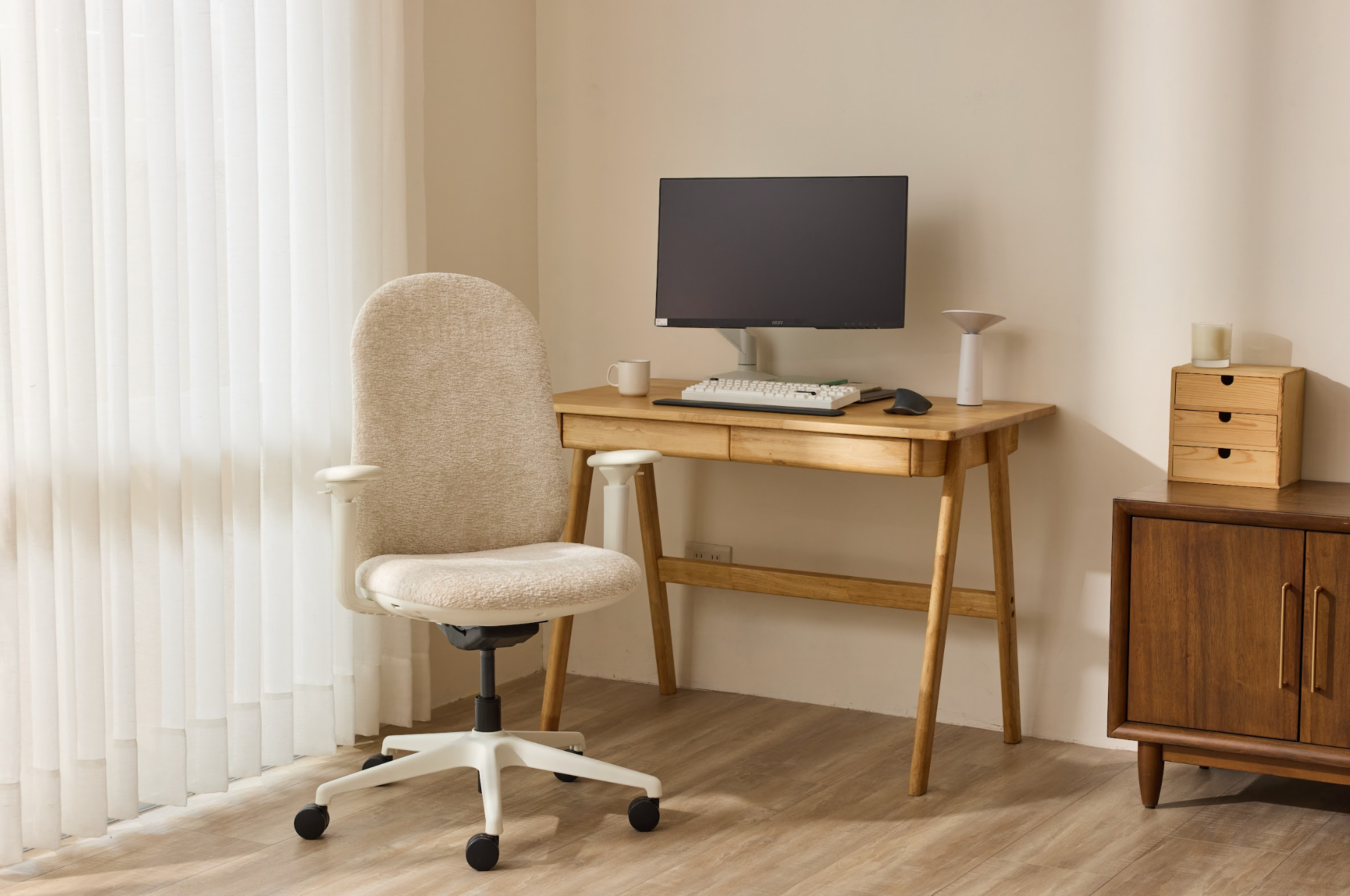Working from home has its perks—no commute, flexible hours, and a personalized workspace. However, poor posture can quickly lead to back pain, neck stiffness, and long-term musculoskeletal issues. The good news? With a few adjustments, you can create an ergonomic home office that promotes better posture and enhances productivity.
1. Set Up Your Workspace for Proper Posture
Your workspace plays a crucial role in maintaining good posture. Here’s how to optimize it:
- Choose an Ergonomic Chair: The Essential Chair from RemoWorks provides fundamental ergonomic features for your workspace, including adjustable armrests, seating height, depths, and lumbar support. Check out Essential designed for remote workers.
- Adjust Your Desk Height: Your desk should be at elbow height when typing. If your desk is too high, use an adjustable chair. If it’s too low, consider a riser.
- Monitor Placement: Position your screen so that the top is at eye level, about an arm’s length away. This prevents you from tilting your head up or down, reducing neck strain.
2. Maintain the Right Sitting Posture
Even the best setup won’t help if you don’t sit correctly. Follow these posture guidelines:
- Keep Feet Flat on the Floor: Your feet should be resting flat on the floor or on a footrest to support your lower back.
- Align Your Back with the Chair: Sit back in your chair with your lower back supported. Avoid slumping forward or leaning too far back.
- Keep Knees at a 90-Degree Angle: Your thighs should be parallel to the floor, and your knees should be at hip level.
- Relax Your Shoulders: Keep your shoulders relaxed and avoid hunching them forward when typing.
3. Take Frequent Breaks and Move Around
Sitting for long hours can lead to stiffness and discomfort. Incorporate movement into your day:
- Follow the 20-20-20 Rule: Every 20 minutes, look 20 feet away for 20 seconds to reduce eye strain.
- Stretch Regularly: Stand up and stretch every hour. Simple exercises like neck rolls, shoulder shrugs, and back stretches can prevent stiffness.
- Use a Sit-Stand Desk: Alternating between sitting and standing improves circulation and reduces back pain. Check out RemoWorks’ standing desks for a flexible work setup.
4. Invest in Ergonomic Accessories
Small adjustments can make a big difference in comfort and posture. Consider these add-ons:
- Ergonomic Keyboard and Mouse: These reduce wrist strain and encourage a more natural hand position.
- Laptop Stand or Monitor Riser: Lifting your laptop to eye level prevents neck strain.
- Anti-Fatigue Mat: If you use a standing desk, an anti-fatigue mat eases pressure on your feet and joints.
5. Strengthen Your Core and Posture Muscles
A strong core helps you maintain good posture effortlessly. Incorporate these exercises into your routine:
- Planks: Strengthens your core and lower back.
- Bridges: Activates glutes and lower back muscles.
- Seated Pelvic Tilts: Helps maintain a neutral spine while sitting.
Maintaining good posture while working from home is essential for long-term health and productivity. By setting up an ergonomic workspace, practicing proper sitting habits, and incorporating movement into your day, you can prevent back and neck pain. Explore RemoWorks for ergonomic furniture that supports a healthier work-from-home experience.




Leave a comment
This site is protected by hCaptcha and the hCaptcha Privacy Policy and Terms of Service apply.